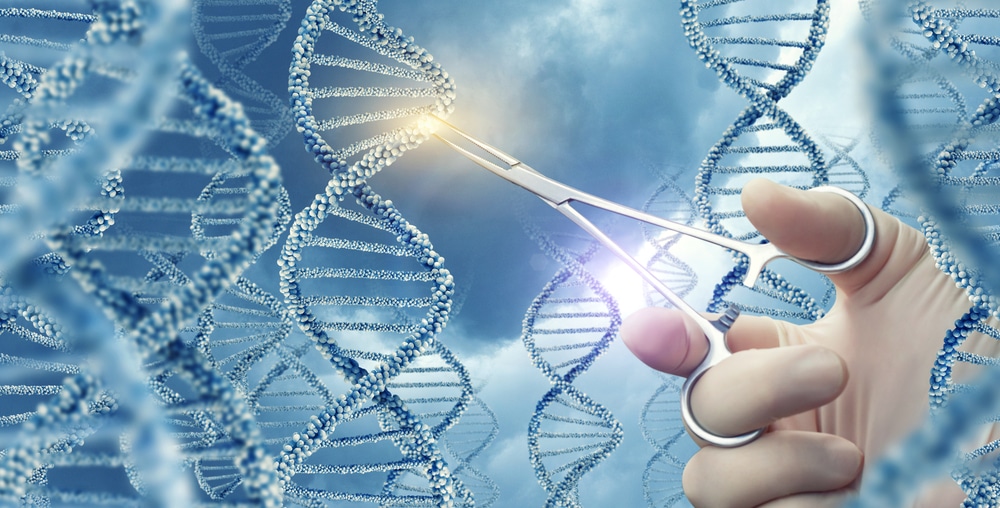The scientists removed a single gene from a set of donated human embryos to try and gain better understanding of the role of the gene in early human development. The embryos were destroyed after 14 days, but that was still more than enough time for the single edit to transform into “major unintended edits,” and the experiment raises some safety concerns for gene edited babies.
Human gene editing is a taboo topic, it is controversial to say the least, and editing embryos beyond short term experimentation is not allowed within America. These scientists conducted their research on a set of 25 donated embryos and used CRISPR gene editing technology to remove a gene from 18, the following analysis revealed 10 of the gene edited embryos appeared to be normal while the other 8 had “abnormalities across a particular chromosome,” and of those “four contained inadvertent deletions or additions of DNA directly adjacent to the edited gene.” Findings of the experiment were published in the preprint server bioRxiv.
This experiment highlights some of the concerns about gene editing when it involves humans, and the unintended edits causing consequences. To Fyodor Urnov, who is a gene editing expert and professor of molecular and cell biology at the University of California it sent a message: “There’s no sugar coating this. This is a restraining order for all genome editors to stay the living daylights away from embryo editing.”
CRISPR technology debuted in 2013, since then it has been explored for the possibility of treating many diseases, especially since this technology is easier and more precise than previous genetic engineering technologies. Even with the advances it still is not foolproof.
The team began removing the POU5F1 gene in 25 embryos and ended with 18, with the other 7 acting as controls, and the results were not as expected, with the inadvertent deletions or additions. The possibility of off target edits has always been a major safety concern with using CRISPR technology on human DNA. This can happen if the machinery doesn’t edit the intended genes and mistakenly edits at another location in the genome. But this experiment puts up a red flag for even on target edits, such as this, which resulted from edits in the correct location on the genome having unintended consequences.
“What that means is that you’re not just changing the gene you want to change, but you’re affecting so much of the DNA around the gene you’re trying to edit that you could be inadvertently affecting other genes and causing problems,” says Kiran Musunuru, a cardiologist at the University of Pennsylvania who uses CRISPR in his lab to research potential heart disease therapies.
While some oppose the use of germline editing to create gene edited babies, some say this may be a way for those who are at high risk of passing on serious genetic medical conditions to their offspring to have healthy babies. This technology also offers the possibility of removing diseases. It may also be a way to create designer babies, which scientists almost universally condemn. Another fear is that even if they develop and appear normal, unintended genetic edits could appear after the child is born as there still is very little understanding of basic human biology and the unintended consequences that could occur as a result of manipulating human genomes; furthermore these genetic changes could be passed on from generation to generation altering the course of human biology and disease incidence.
Biologist Kathy Niakan argues that more research should be done on the basic biology of human development before gene editing can be used to create babies in an editorial published in the journal Nature: “One must ensure that the outcome will be the birth of healthy, disease-free children, without any potential long-term complications,” she wrote.
The embryos that Naikon and her team created were never intended to start a pregnancy. Her lab became the first in the UK to receive permission to use CRISPR technology in human embryos for research purposes, and the embryos were left over from fertility treatments that were donated.
“Nobody has any business using genome editing to try to make modifications in the germline,” he says. “We’re nowhere close to having the scientific ability to do this in a safe way,” says Musunuru.
The US National Academies, along with the UK’s Royal Society, and W.H.O are contemplating international standards around the use of germline genome editing, and the committees are expected to release their recommendation by 2021. However, as these organizations have no real enforcement powers it will be up to the individual governments to adopt any standards to make them into an actual law.




